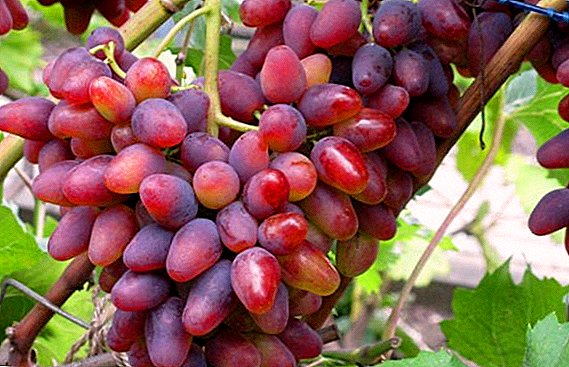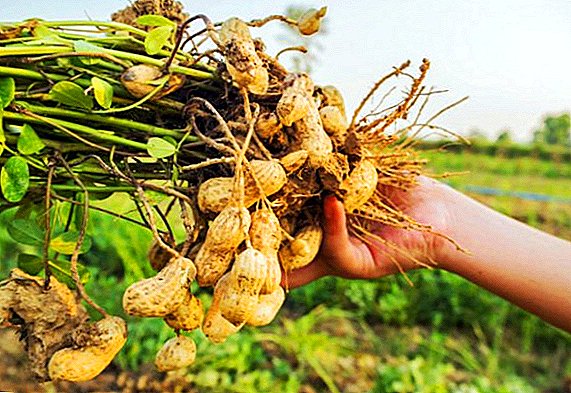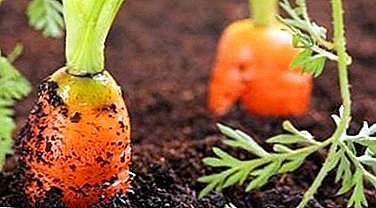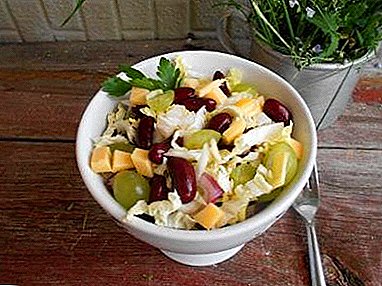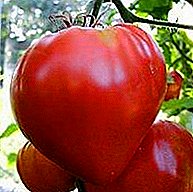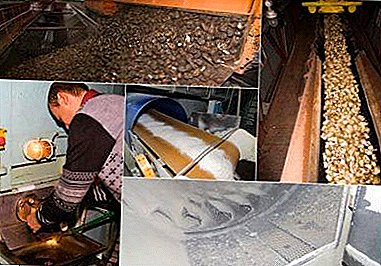 Freezing is one of the best ways of harvesting food for the winter, which allows you to preserve their beneficial substances to the maximum throughout the entire period of vitamin deficiency. In addition, by resorting to it, it is possible to save space in the closet, placing less conservation there. Also, you will save time, effort and money, because the process is quick and very simple, and in summer vegetables cost much less than in winter.
Freezing is one of the best ways of harvesting food for the winter, which allows you to preserve their beneficial substances to the maximum throughout the entire period of vitamin deficiency. In addition, by resorting to it, it is possible to save space in the closet, placing less conservation there. Also, you will save time, effort and money, because the process is quick and very simple, and in summer vegetables cost much less than in winter.
In the article we will tell you in detail whether it is possible to freeze the zucchini for the winter, and how to do it in a regular freezer.
Are useful properties preserved when frozen?
In terms of vitamins and trace elements zucchini is not particularly stands out among other vegetables.
It contains:
- vitamins - A, B, C, H, PP;
- minerals - potassium, phosphorus, sodium, iron, magnesium.
 This is a low-calorie product - it is only 24 kcal per 100 g. However, it is one of the vegetables that are advised to enter as the first complementary foods for small childrenSince the substances included in its composition do not cause allergies and are easily absorbed by the still imperfect infant digestive system.
This is a low-calorie product - it is only 24 kcal per 100 g. However, it is one of the vegetables that are advised to enter as the first complementary foods for small childrenSince the substances included in its composition do not cause allergies and are easily absorbed by the still imperfect infant digestive system.With this method of harvesting for the winter, like freezing, a zucchini, just plucked from the garden, retains its useful qualities to the maximum - up to 80%. The main thing is to choose the right specimens for freezing and follow the recommendations for proper freezing.
Selecting products for freezing, you should pay attention to the peculiarities of freezing tomatoes, strawberries, pumpkins, mint, Brussels sprouts, broccoli, mushrooms, corn, cherries, blueberries.Modern freezers with a deep freezing system make it possible to save almost the entire vitamin-mineral complex and vitamin C (its content determines the quality of fruit and vegetable preservation), as well as the smell and appearance of food. During the six months of being frozen, the zucchini can lose up to 10-15% ascorbic acid. Losses are about the same as the product loses when stored at room temperature for a day.

Important! The less time passes from the process of picking a vegetable to its freezing, the more valuable substances it will save when it is frozen.
Selection and preparation of zucchini
The best choice for freezing - young zucchini with thin and light skin. They should be small - 12-20 cm in length and weighing 100-200 grams.
Before the procedure, the vegetables must be inspected for damage, stains, spoilage, signs of lethargy.
Freshly harvested vegetables must be removed. Then they must be well washed and dried. If they are purchased, it is advisable to soak them for an hour in water. To dry fit paper or cotton towel. If time allows, then drying should take from 30 to 60 minutes.
If the zucchini is not too young, it is desirable to clean them and remove the seeds.
Next, you need to bring the vegetables in the state in which you plan to freeze them: cut into cubes, bars or rings, fry, prepare mashed potatoes, etc.
Ways of freezing
There are several ways to freeze zucchini. We will look at four:
- cut into rings or cubes;
- fried;
- grated;
- in the form of mashed potatoes.
Did you know? It has been established that people who regularly consume zucchini are less susceptible to the appearance of gray hair.
Rings or cubes
Now a little more about how to freeze zucchini for the winter fresh.  The algorithm of actions is as follows:
The algorithm of actions is as follows:
- Washed, dried and cut into cubes (1.5-2 cm) or ringlets (1-1.5 cm thick), vegetables are dried using a paper towel. The less moisture - the better the quality of freezing.
- The cubes or rings are laid out in one layer on a cutting board, plate or other surface, covered with cling film and sent to the freezer overnight. It is important that the cut pieces do not touch each other.
- In the morning, already frozen zucchini is removed from the freezer and placed in storage in plastic bags or special freezer bags with clasps.
There is another way in which the blanching step is added:
- After cutting the vegetables, they are blanched: first, they are placed in salted boiling water for three to four minutes and then cooled and allowed to drain.
- After blanching, the vegetables are packaged in bags and sent to the freezer.
 Blanching of the product leads to the fact that its upper part softens slightly. With quick freezing, it turns into a thin crust that reliably preserves all the pulp and juice. In addition, it stops the fermentation processes that affect the structure, flavor and color of vegetables.
Blanching of the product leads to the fact that its upper part softens slightly. With quick freezing, it turns into a thin crust that reliably preserves all the pulp and juice. In addition, it stops the fermentation processes that affect the structure, flavor and color of vegetables.Important! Blanching is convenient to carry out, pouring vegetables into a sieve and placing it first in boiled water, and then in a bowl with ice. So you can immediately remove them from boiling water and cool. It is important that the vegetables do not touch the ice.If we talk about proportions, then one kilogram of vegetables will need to take three to four liters of boiling water.
Fried
Before freezing zucchini can fry:
- Washed and dried zucchini cut into rings.
- Fry in vegetable oil, previously rolled in flour.
- Put in a sieve or paper towel to get rid of excess fat.
- Bring to room temperature.
- Packed in containers or packages, evenly distributing them and releasing the air.
- Send in the freezer.

Grated
It is not necessary to store zucchini in more or less whole form. It is sometimes more convenient to deal with a pasty product:
- Squashes washed, dried and peeled. If desired, clean the seeds.
- Rub on an average grater.
- Squeeze the juice.
- The pulp is laid out in bags and placed in a freezer.
Mashed potatoes
There is a great way to freeze zucchini for winter at home for a child - cook mashed potatoes.
- Zucchini washed, cleaned and cut into cubes.
- Put in boiling water and cook until such time as they become almost ready.
- The cubes are removed from the water and allowed to drain.
- When the vegetables have cooled, they should be placed in a blender and chopped.
- Then mashed potatoes are packed in small plastic containers (one portion each), covered with lids or film and put in the freezer.
Did you know? The Australian Ken Dade removed the world's largest squash in the world in 2008. His weight was 65 kg.To freeze quality, use a few tips:
- It is advisable to place vegetables intended for one dish in bags for freezing, so that the product does not undergo repeated freezing. Repeated freezing is strictly prohibited.
- When freezing vegetables in bags, you must completely remove the air before placing them in the freezer. This will help in this straw for a cocktail, which is inserted into a small hole, where the bag is closed or tied.
- In the freezer, vegetables must be kept in a separate compartment from meat and fish.
- In packages you can freeze the mix of vegetables and herbs. For example, if zucchini is made for soup, then you can add pre-frozen parsley, dill, scallions, carrots, peppers, and other ingredients. You can also add boiled salted rice. For pancakes, mix frozen zucchini and carrot.
- When freezing a large number of vegetables, they can be placed on a dish or tray in several layers, each of which is covered with cling film.
- Best suited for freezing vacuum bags.
Vegetables at home can still be dried, pickled, boiled from them jam.

Shelf life
The shelf life of frozen zucchini is between five and eight months, if a preliminary quick freeze has been carried out. Without prior freezing, vegetables are usable for six months.
Did you know? When zucchini was first introduced to Europe in the 16th century, at first they were used only as an ornamental plant, because they bloomed with beautiful, large yellow flowers.
How to defrost
Like other vegetables, zucchini special purpose to defrost is not worth it. If you plan to add them to the soup, then immediately after removing them from the freezer they are thrown into boiling water.
Fried zucchini is placed in a microwave for heating. After that, they are ready to eat.
Vegetables, cut into rings, are thawed slightly (but not completely, otherwise they will crumble), then roll in flour and fry on both sides in vegetable oil.
If you plan to defrost vegetables, then it should be done on the bottom shelf of the refrigerator. After complete thawing, the liquid will need to be drained. In the same way, baby puree is defrosted, which, before use, is slightly heated to a temperature of 37 ° C.
Freezing zucchini - this is an easy way to prepare them for the winter at home. Thus you can provide yourself with fresh vegetables for the entire avitaminosis period, using them as a side dish, in stews, soups, soups, mashed potatoes, caviar, pancakes, and casseroles. Now you also know that you can freeze mashed potatoes - and this is the best way to freeze zucchini for feeding a child. Enjoy your meal!



